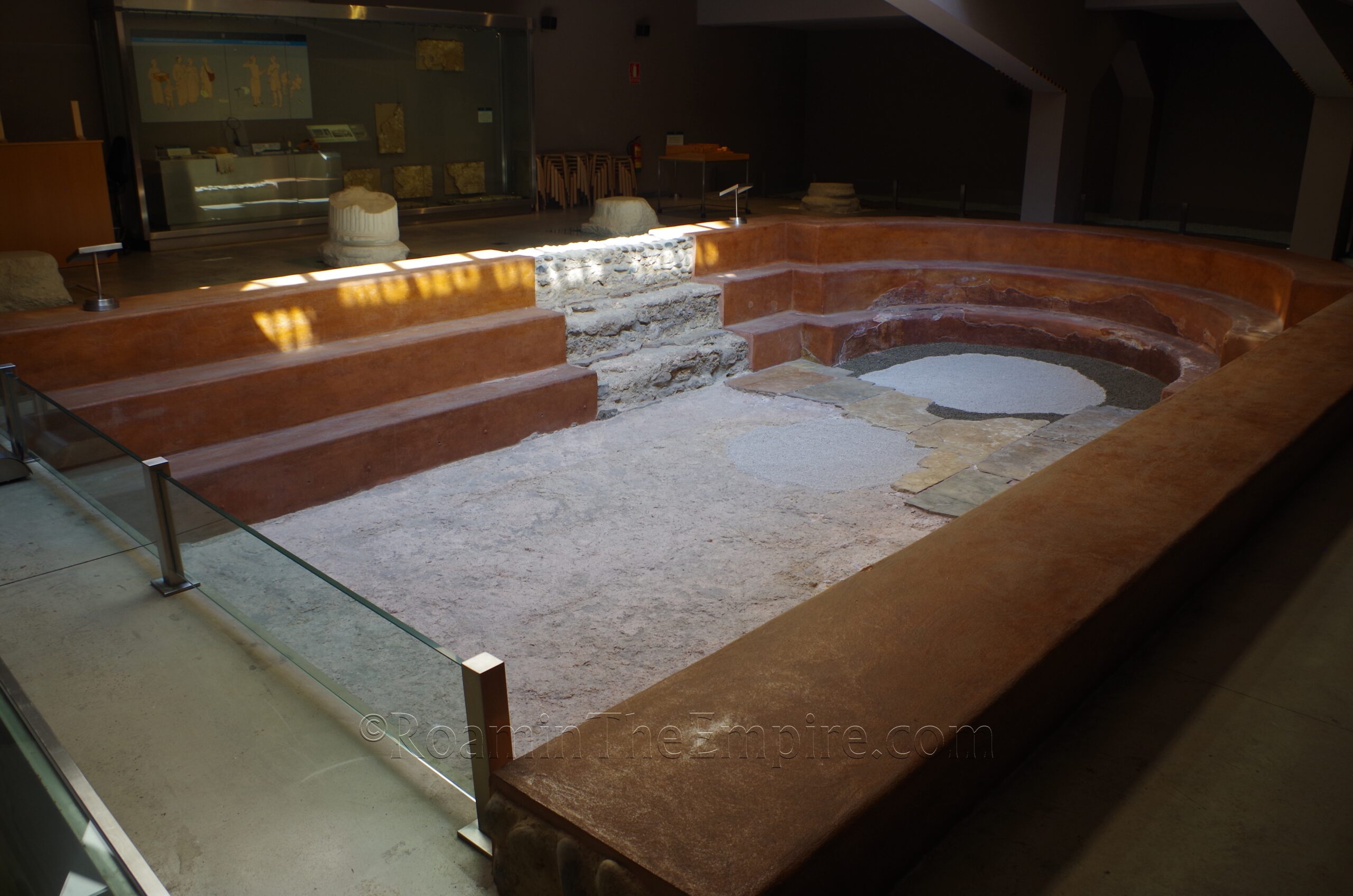
Continued From Colonia Caesar Augusta – Part I
Just a block away, on the next street to the north of the theater, is the Museo de las Termas Públicas de Caesaraugusta. These are located at the Calle de San Juan y San Pedro 7. These share the same opening and admission scheme as all the Roman sites of Colonia Caesar Augusta. It is open Tuesday through Saturday from 10:00 to 14:00 and 17:00 to 21:00, and is open on Sundays from 10:00 to 14:30. It is closed on Monday. Single admission is 4 Euros, but it is also part of the 9 Euro combination ticket that includes the baths, forum, river port, and theater (and Pablo Gargallo Museum).
A small area of a bathing complex is preserved at this location. There are some traces of opus spicatum flooring from an area of unknown use dating to around the foundation of Colonia Caesar Augusta. Sometime around the end of the reign of Tiberius, a large public latrine was built in the space. These functioned until a renovation during the Flavian period in which the latrines were destroyed and a natatio was built. The natatio was surrounded by a portico. In the early 4th century CE, the baths were no longer functioning and some elements, such as the marble flooring around the natatio, were removed for secondary use.
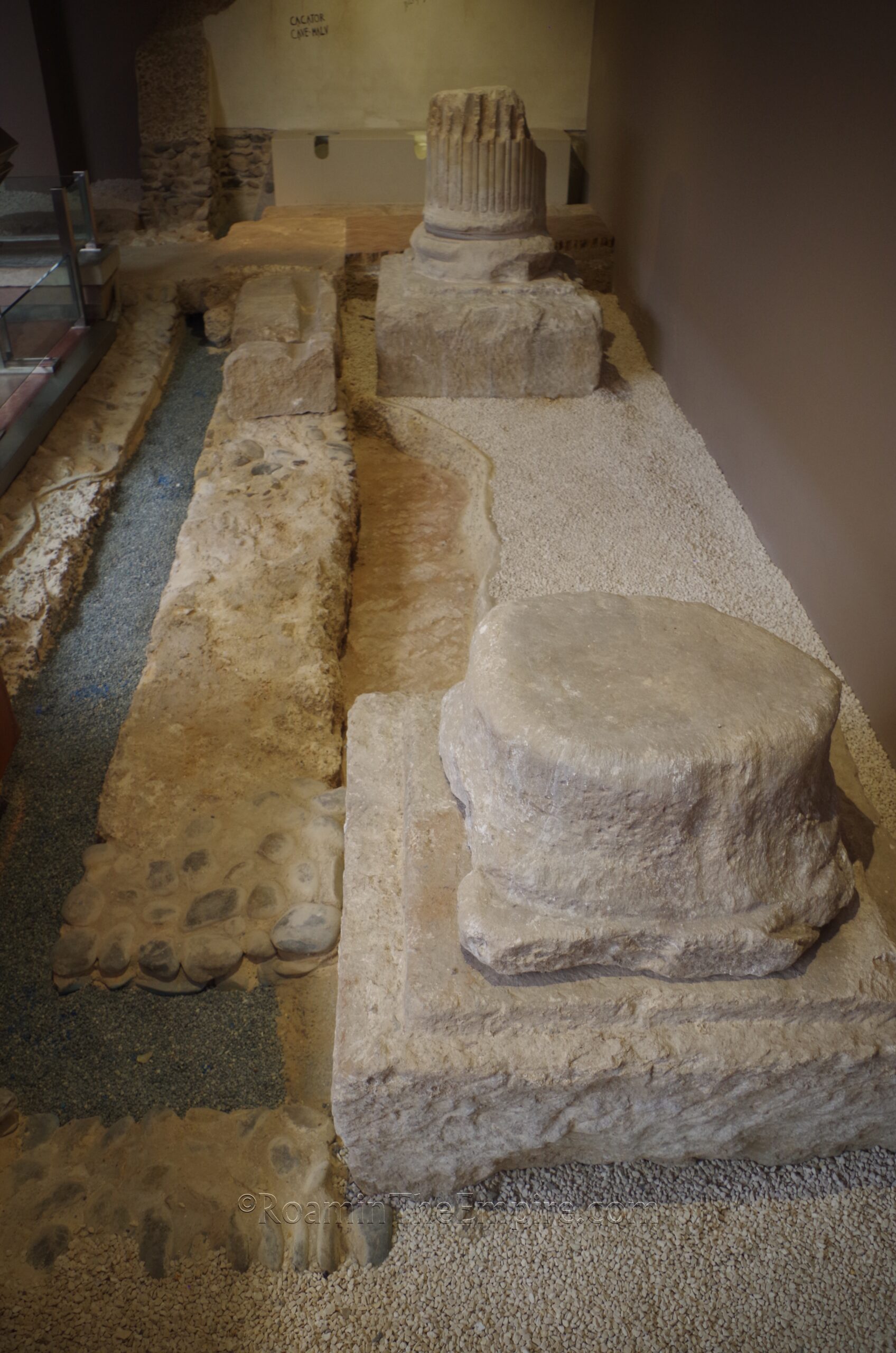
About 9.7 meters of the total 15.8 meters of the natatio is preserved. Some marble elements from the floor are present as well as some of the original plaster that decorated the three steps that led down into the pool around its entirety. The pillar bases for the portico that surrounded the pool are also present. On the far side of the pool (relative to the entrance) above the intact end of it, the opus spicatum flooring has been revealed and preserved. Adjacent to that are a reconstructions of the latrines along with a few original elements. The main water channel beneath the latrines is exposed and part of the channel for the washing water in front of the latrines is preserved. A cloaca channel is exposed in the flooring on the near end of the pool, where the final 6.1 meters of the pool are not visible. Along one wall, some marble decorative elements from the baths are displayed along with reproductions of items that were used in bathing. The baths are a pretty quick visit, requiring only about 15 minutes or so.
A few blocks north of the baths (about 300 meters walking distance), in the middle of Plaza de la Seo, which is located just west of the Catedral del Salvador, is entrance for the Museo del Foro de Caesaraugusta. The official address of the museum and archaeological area is Plaza de la Seo 2. The museum and site are open the same hours as the theater and baths; Tuesday through Saturday from 10:00 to 14:00 and 17:00 to 21:00 and Sunday from 10:00 to 14:30. It is closed on Monday. Admission is the same as well, with 4 Euros for a single admission and 9 Euros for the combination ticket of all four Roman sites and the Pablo Gargallo Museum.
The museum and archeological area encompass a significant portion of the western side of the forum. The original forum of Colonia Caesar Augusta dates to the reign of Augustus, likely constructed around the foundation of the colony. During the reign of Tiberius, however, the forum was radically redesigned and reconstructed. It is remains of the Tiberian era forum that make up the bulk of the archaeological area. Like the river port, an audio visual presentation is part of the visit at the forum. Visitors are encouraged to descend to the lowest level of the museum to see the presentation. This lowest level also houses the artifact collection, which is housed in several cases that are divided into thematic assemblages. There is also a large floor mosaic displayed on a wall. Though at a significantly lower level, the exhibition space essentially occupies what would have been the open area of the forum.
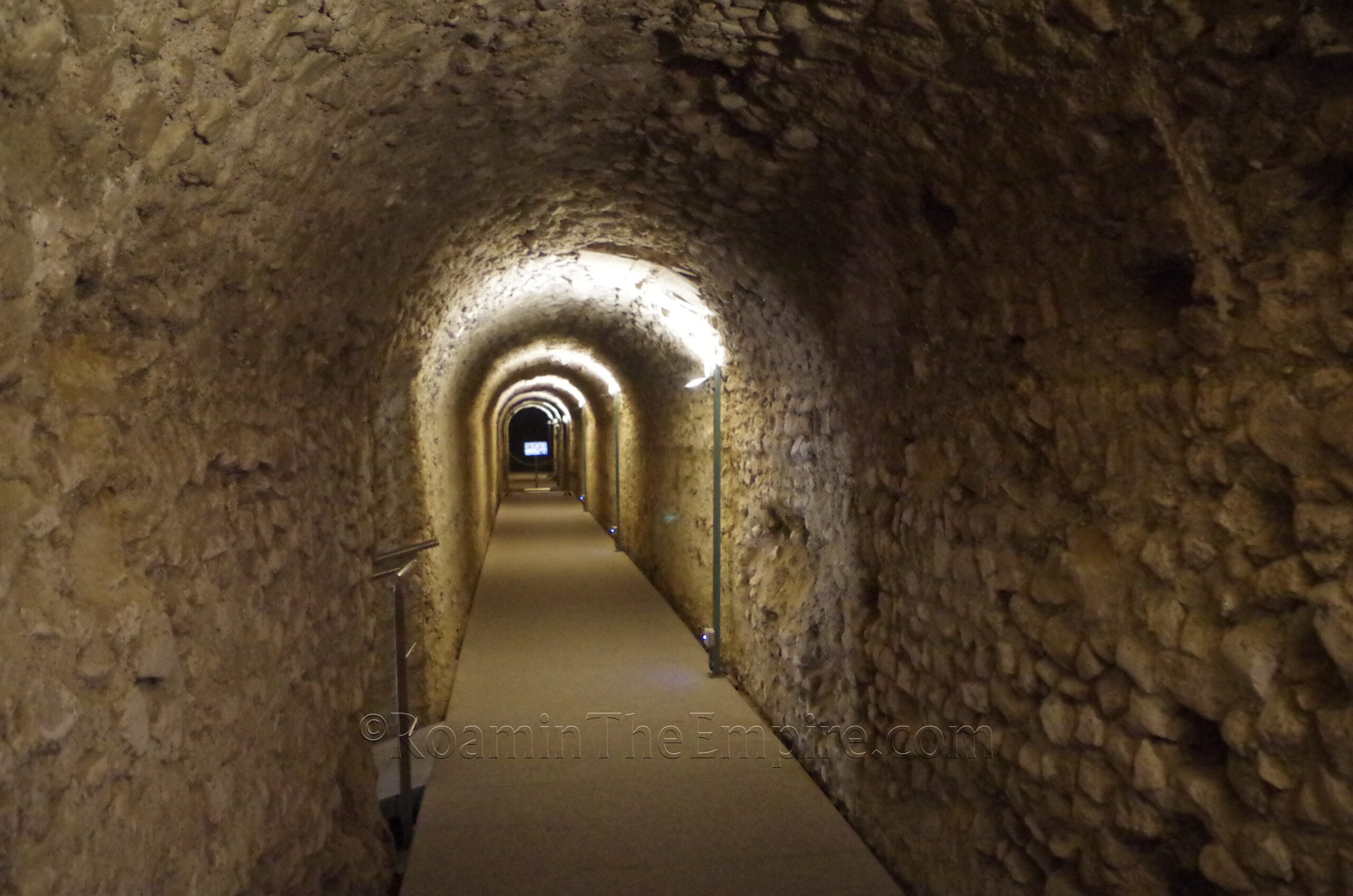
At the far (north) end of the lower hall, there is access to the interior of the large Tiberian era sewer channel, which ran along the edge of the portico and forum. The base level of the sewer channel is more or less at the floor level of the exhibition hall. At a slightly higher level (relative to the floor of the exhibition hall, but below the upper extent of the Tiberian sewer channel) a much smaller Augustan era sewer channel is visible. The Augustan sewer channel runs slightly perpendicular to the Tiberian channel and effectively would have intersected with the Tiberian channel the point of entrance had it not been destroyed to make way for the later construction. One can enter the Tiberian era channel and walk along inside for several meters.
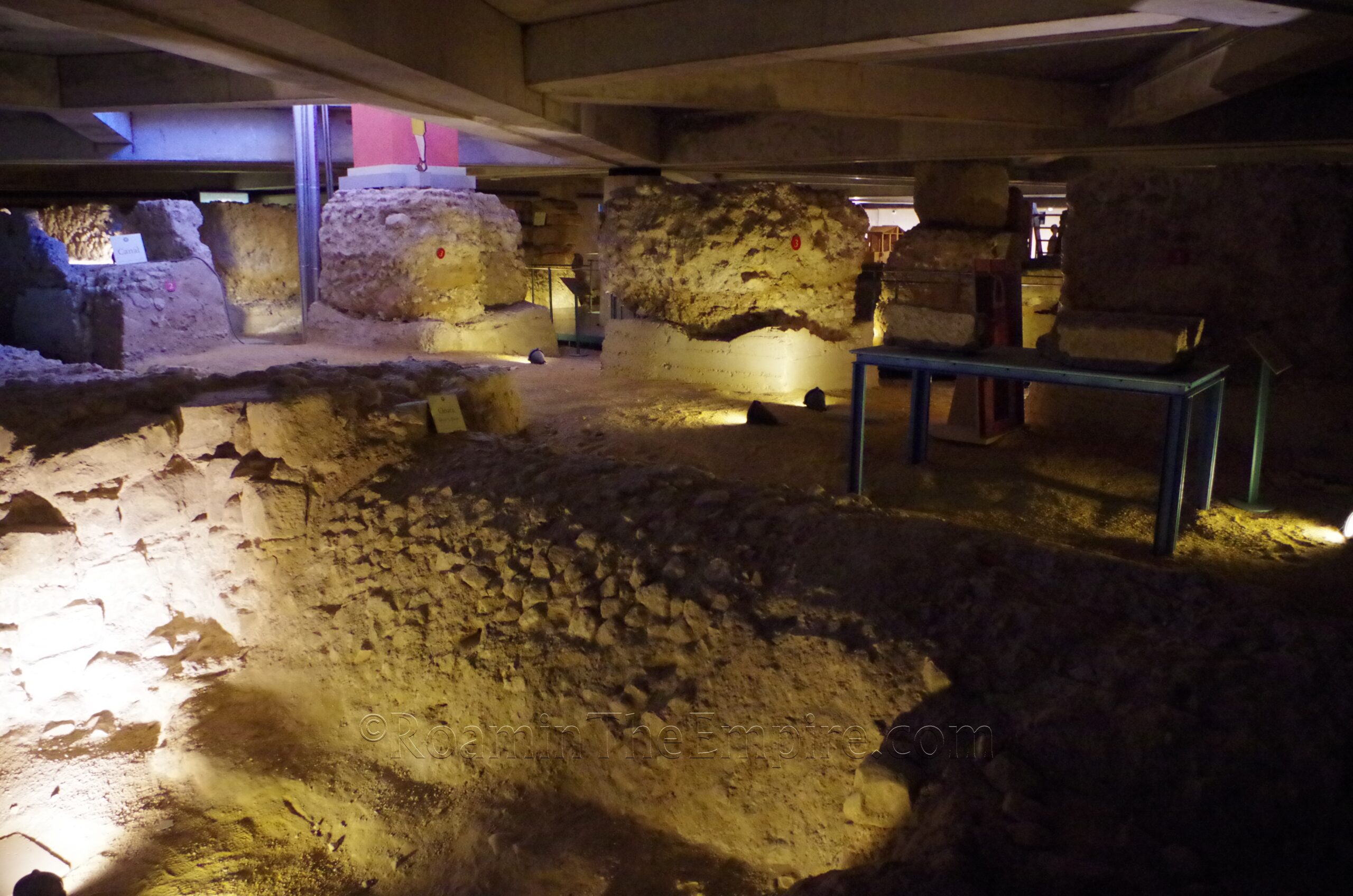
Retracing back to the main staircase, one can ascend to the middle level, which contains the bulk of the archaeological remains. Facing onto the open area of the forum are the foundations of the pillar bases that supported the portico that ran around this side of the forum. A water channel which ran along the western side of the open area of the forum just above the Tiberian sewer channel is also present. Farther to the west are the tabernae stalls that were located along the portico. Most everything up on this level dates to the Tiberian forum, though there are a few wall elements from the Augustan forum, including a wall inside the third to last (from the north side) taberna and a water channel among the portico bases. Some of the tabernae have reproductions and reconstructions of Roman objects to replicate what the contents of these buildings would be. A helpful model of the remains of the forum is located on this level as well. The signs and information in the forum museum are mostly in Spanish, but there are a few with English as well. It took me about 45 minutes to go through the forum area, but may have taken a little longer if there was more information in English; so Spanish speakers may want to budget a little more time.
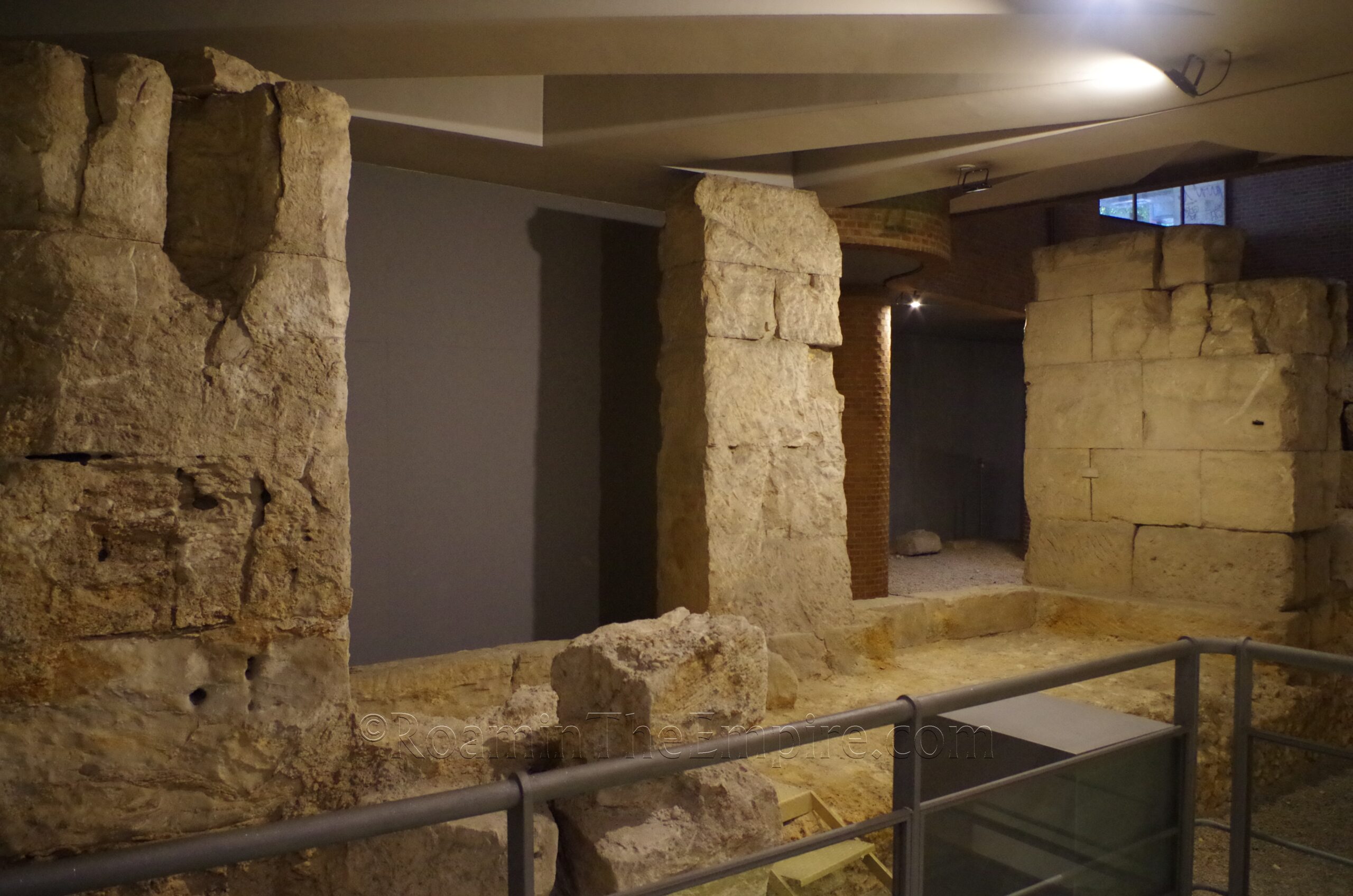
Around the north side of the cathedral is Plaza San Bruno and the entrance to the Museo del Puerto Fluvial de Caesaraugusto, located on the north side of the plaza at Plaza San Bruno 8. The museum and archaeological area is open Tuesday through Saturday from 10:00 to 14:00 and 17:00 to 21:00, and is open on Sundays from 10:00 to 14:30. It is closed on Monday. Single admission is 4 Euros, but there is also a combination ticket with the theater, baths, and forum (as well as the Pablo Gargallo Museum) for 9 Euros.
As the Spanish name would suggest, these excavations and small corresponding museum are part of a complex associated with the river port of the city. It is located at the northeast side of the forum of Colonia Caesar Augusta, between the forum and the river. The archaeological exhibition consists primarily of an arcaded building that looked out over the river docks. Within the building was goods storage and a vestibule that led up into the forum. The first building phase, of which the arcaded building belongs to, occurs in the late 1st century BCE or early 1st century CE, during the reign of Augustus. A large retaining wall to buffer the river and support the docks was constructed adjacent to the arcaded building in the latter half of the 1st century CE.
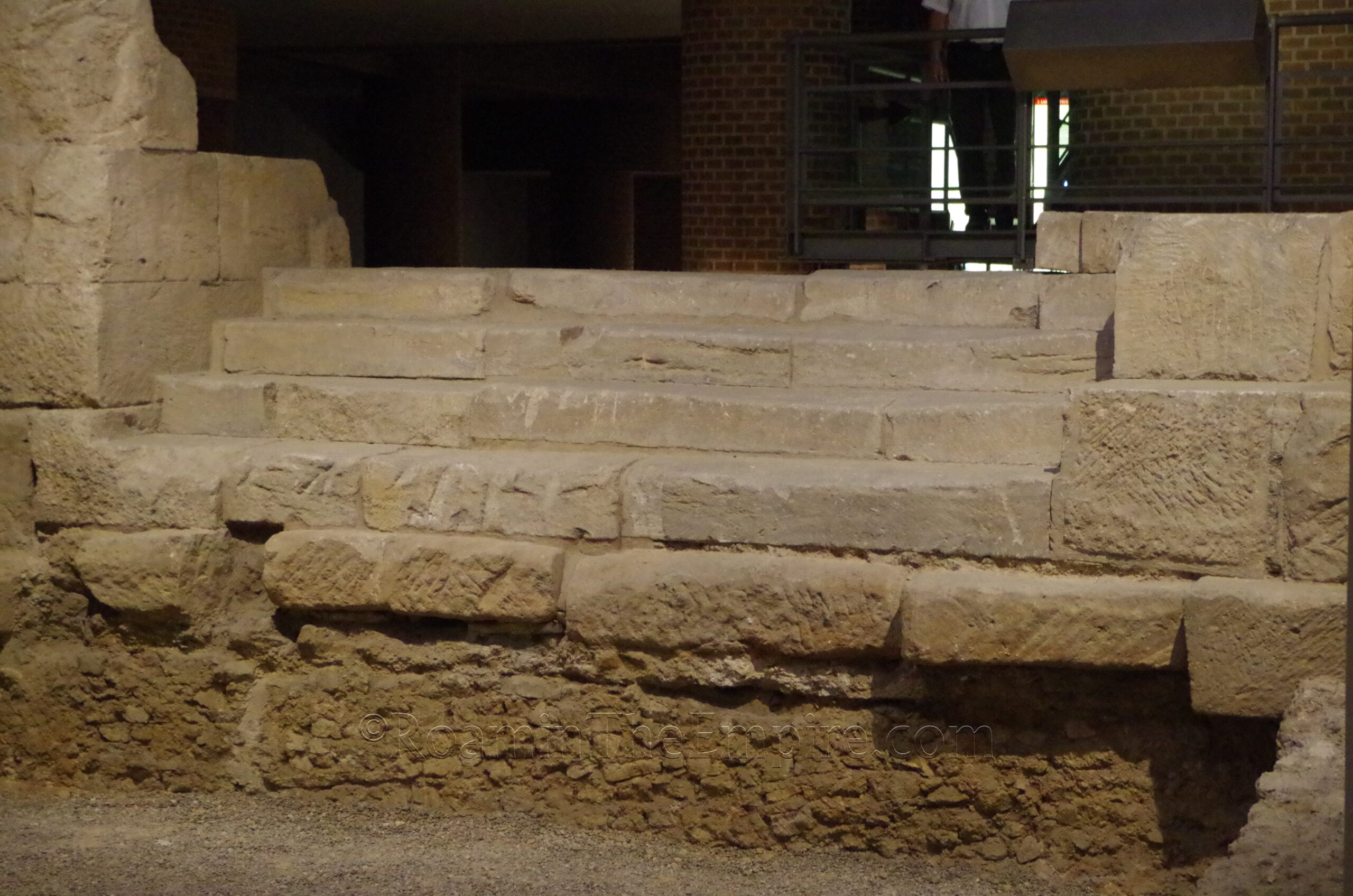
The visit includes an audiovisual presentation that is given in Spanish. There are a number of informational signs, all also in Spanish, as well as some models of boats and of the section of the building that is preserved. The signs help a little bit to contextualize the remains of the building with some layout plans. The most distinguishable feature of the archaeological area are the first few steps of the staircase that led up into the forum. As a sign near the staircase points out, there are some mason’s marks on the stones around the staircase indicating the construction work was undertaken by Legio VI Victrix and Legio X Gemina. Some of the foundations of the building are also preserved beneath a glass walkway around the exhibition area. A half an hour is a reasonable budget of time for the river port, though again, someone that could get more out of the Spanish information might spend a little longer.
A 5 minute walk to the east out along Paseo de Echegaray y Caballero and onto Calle de Coso are the foundations of a few towers from the Roman walls. These are incorporated into the exterior walls of the Conventos de las Canonesas del Santo Sepulcro along Calle de Coso. The convent, built in the late 19th century CE, incorporated the medieval walls of Zaragoza into the structure, which in turn had been built on the Roman walls. The lower few courses of the wall and the towers date to the Roman period.
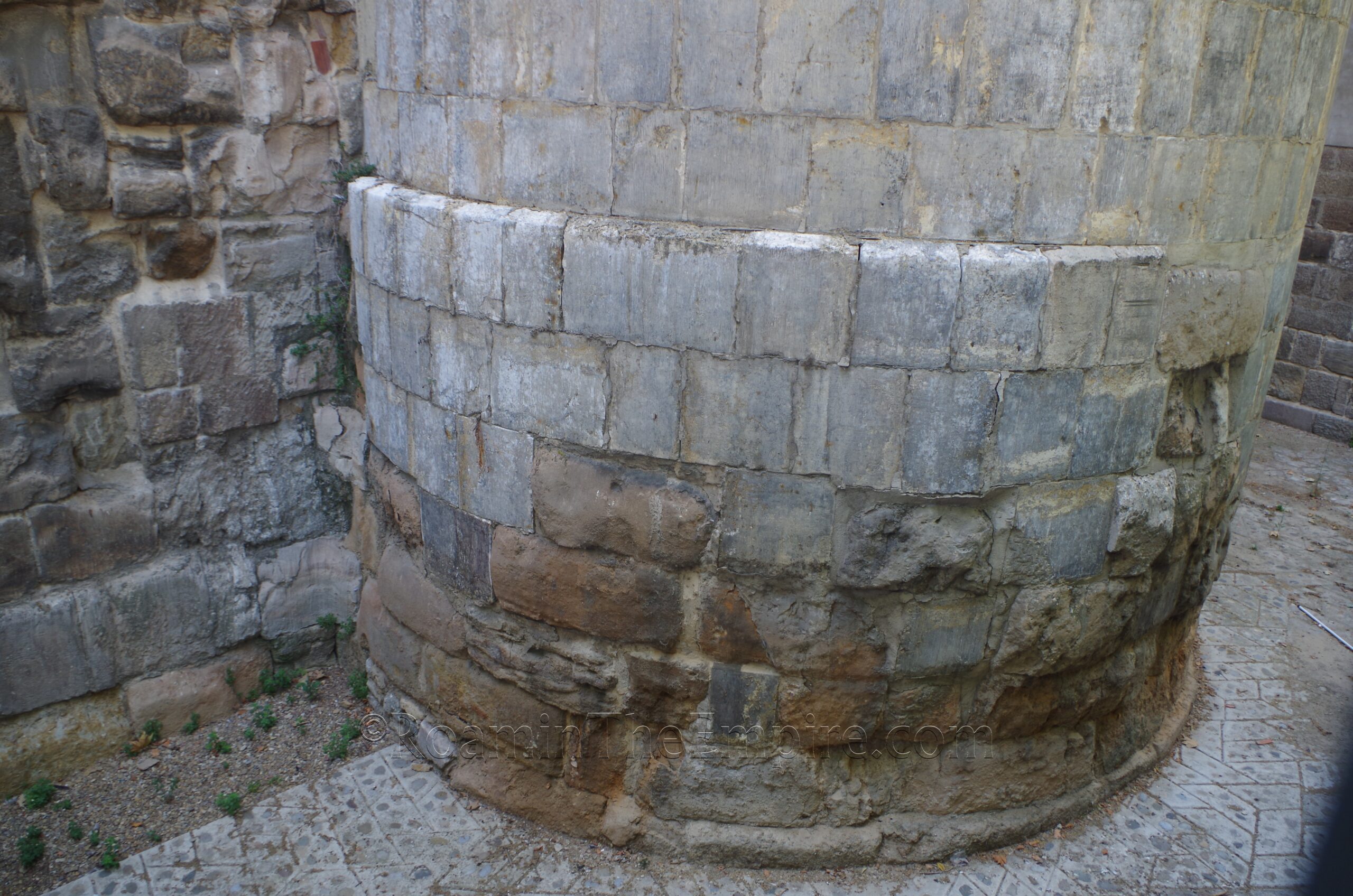
A circuit of walls was likely constructed around the time of foundation and then reinforced in the 1st century CE, of which little evidence has been found. The sections of wall that remain today date to the rebuilt walls of the late 3rd century CE. The rebuilt walls were about 7 meters thick. The circuit of the walls have been pretty well established by finds, most of which have been destroyed or cannot be visited. The eastern course of the walls basically followed south along the present-day Calle de Coso. The walls continued along Calle de Coso where it curves around and heads to the west, making up the southern walls of the city. Then, where Calle de Coso meets Avenida de César Augusto, the walls turned back to the north along the course of the latter road until it meets with the riverside Paseo de Echegaray y Caballero. It is unclear if the defensive walls enclosed the north side of the city facing the river.
About 400 meters west down Paseo de Echegaray y Caballero is the Puente de Piedra. There is some debate as to whether any of the existing elements of this bridge are Roman. It is likely that a bridge spanned the river at this location in antiquity, probably built around the same time the colony was founded. It was supposedly destroyed and then rebuilt in the 9th century CE, and the current bridge was built in the 15th century CE. The presence of lead pipes found around the base of the bridge (now in the Museo del Foro) would suggest an aqueduct bridge also crossed the river at this location.
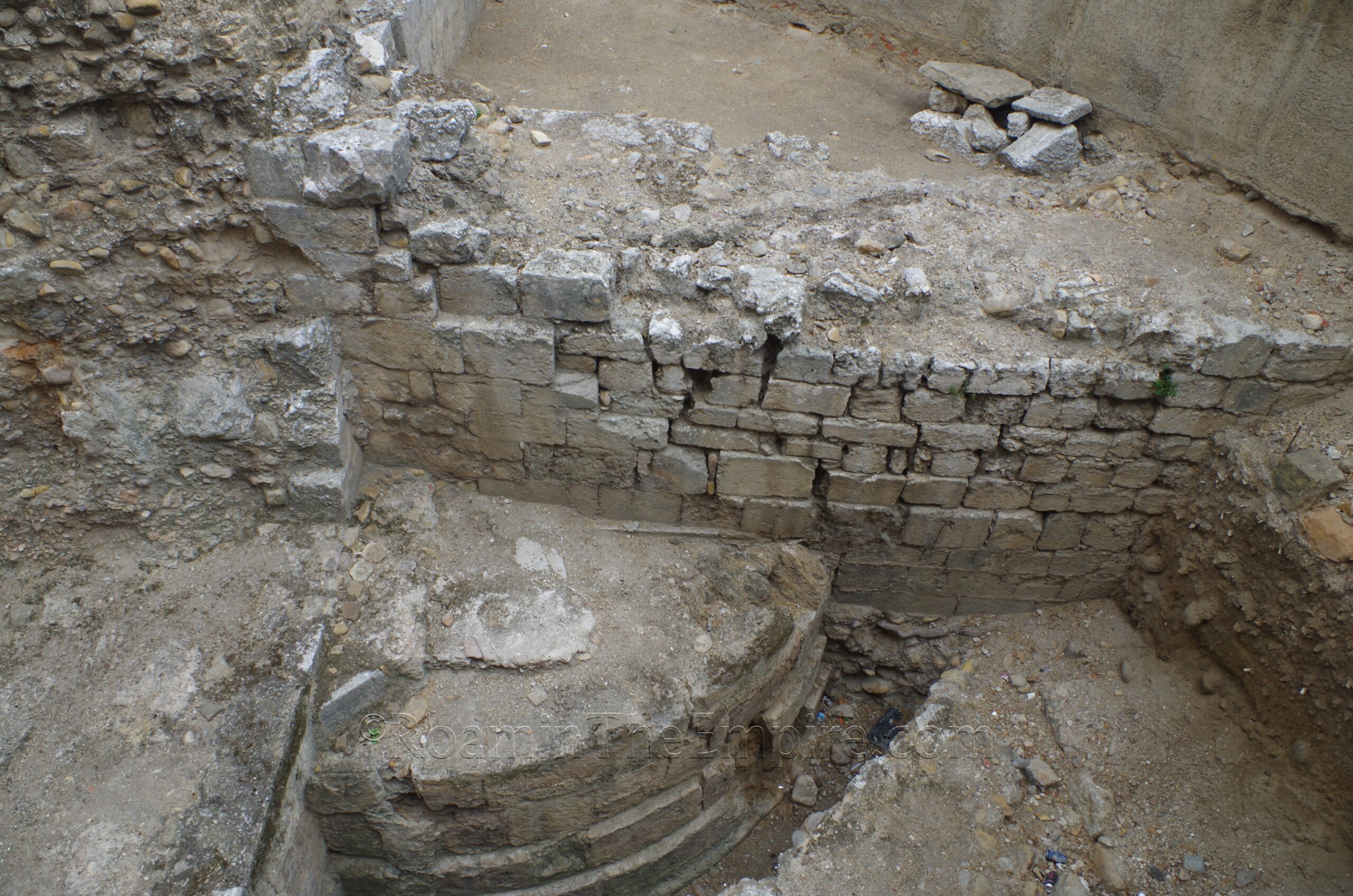
Another half a kilometer west down Paseo de Echegaray y Caballero, at the southeast corner of the intersection with Avenida de César Augusto are some remains of the western wall of Colonia Caesar Augusta. The excavations here expose the wall well below the present ground level and the level of the medieval walls, which are visible a little bit farther to the south, past the 10th century CE Torre de la Zuda. More Roman elements of the wall are visible on the east side of the medieval wall, adjacent to Plaza de César Augusto. Another small section of the wall, detached from the contiguous course, sits about 25 meters southwest of the walls, next to a modern bronze statue of the city’s namesake, Augustus.
Though the long siesta break in the middle of the day can throw the rhythm off a little bit, the remains of Colonia Caesar Augusta can pretty easily be seen over the course of a single day. The frequent departures between Zaragoza and Madrid and relatively quick journey by train can make for a relatively easy (though perhaps expensive) day trip from Madrid by public transport. Zaragoza is an overall nice stop, and really is worth a couple days. The long drive time (over three hours) make it less accessible as a day trip from Madrid via private vehicle.
Sources:
Beltrán Lloris, Francisco (ed.). Zaragoza: Colonia Caesar Augusta. Rome: l’Erma di Bretschneider, 2007.
Grant, Michael. A Guide to the Ancient World: A Dictionary of Classical Place Names. New York: Barnes & Noble Books, 1997.
Hydatius. Episcopi Chronicon, II.25.
Isodurus Hispalensis. Historia de Regibus Gothorum, Vandalorum et Suevorum, 34.
Pliny the Elder. Historia Naturalis, 3.18-24.
Pomponius Mela. Chorographia, 2.88.
Smith, William. Dictionary of Greek and Roman Geography. Walton & Murray, 1870.
Stillwell, Richard, William L. MacDonald, and Marian Holland. McAllister. The Princeton Encyclopedia of Classical Sites. Princeton, NJ: Princeton U Press, 1976.
Strabo. Geographica, 3.2.15, 3.4.10-13.


